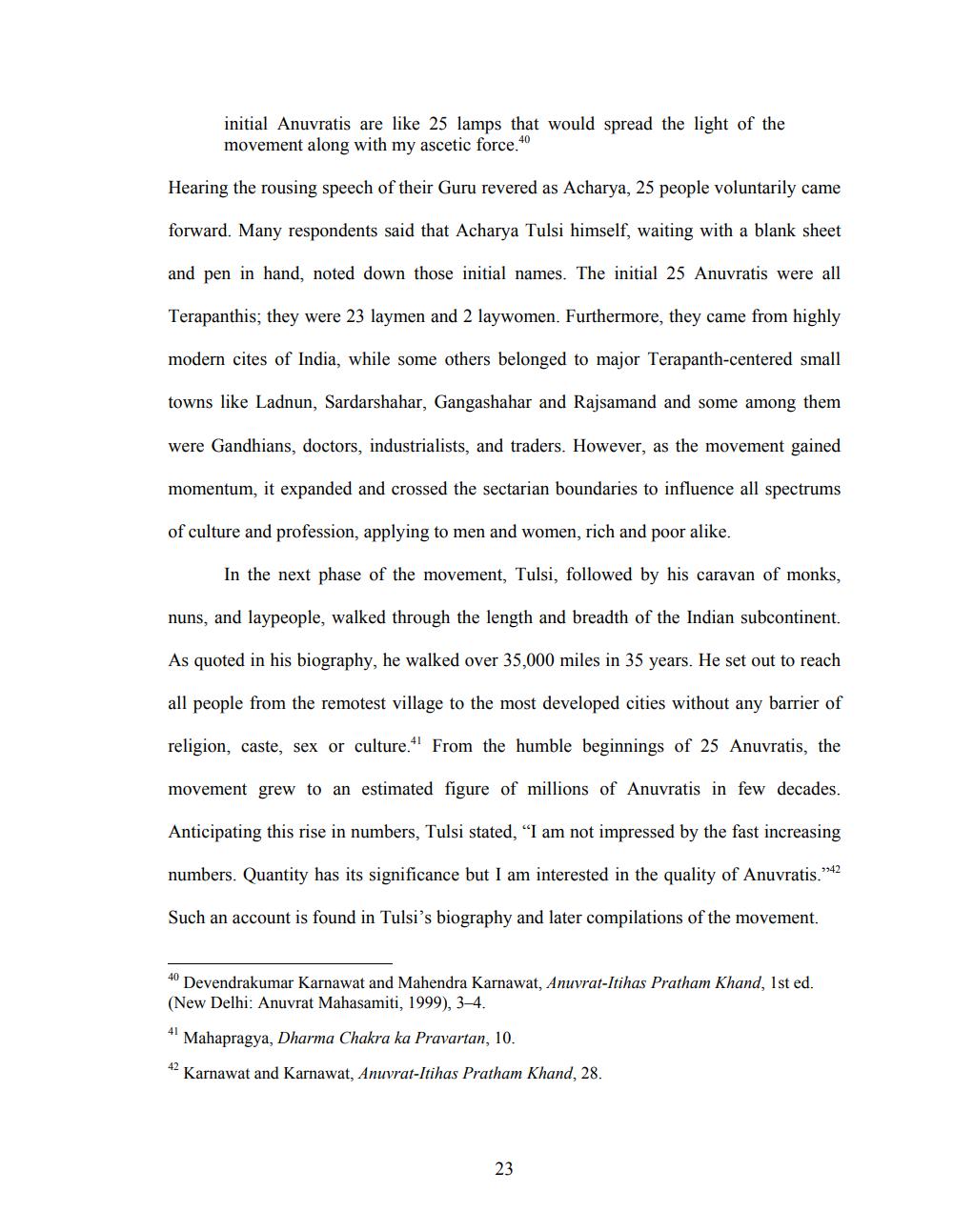________________
initial Anuvratis are like 25 lamps that would spread the light of the movement along with my ascetic force."
Hearing the rousing speech of their Guru revered as Acharya, 25 people voluntarily came
forward. Many respondents said that Acharya Tulsi himself, waiting with a blank sheet
and pen in hand, noted down those initial names. The initial 25 Anuvratis were all
Terapanthis; they were 23 laymen and 2 laywomen. Furthermore, they came from highly
modern cites of India, while some others belonged to major Terapanth-centered small
towns like Ladnun, Sardarshahar, Gangashahar and Rajsamand and some among them
were Gandhians, doctors, industrialists, and traders. However, as the movement gained
momentum, it expanded and crossed the sectarian boundaries to influence all spectrums
of culture and profession, applying to men and women, rich and poor alike.
In the next phase of the movement, Tulsi, followed by his caravan of monks,
nuns, and laypeople, walked through the length and breadth of the Indian subcontinent.
As quoted in his biography, he walked over 35,000 miles in 35 years. He set out to reach
all people from the remotest village to the most developed cities without any barrier of
religion, caste, sex or culture.
From the humble beginnings of 25 Anuvratis, the
movement grew to an estimated figure of millions of Anuvratis in few decades.
Anticipating this rise in numbers, Tulsi stated, “I am not impressed by the fast increasing
numbers. Quantity has its significance but I am interested in the quality of Anuvratis. 9:42
Such an account is found in Tulsi's biography and later compilations of the movement.
40 Devendrakumar Karnawat and Mahendra Karnawat, Anuvrat-Itihas Pratham Khand, 1st ed. (New Delhi: Anuvrat Mahasamiti, 1999), 3-4.
41 Mahapragya, Dharma Chakra ka Pravartan, 10.
42 Karnawat and Karnawat, Anuvrat-Itihas Pratham Khand, 28.
23




